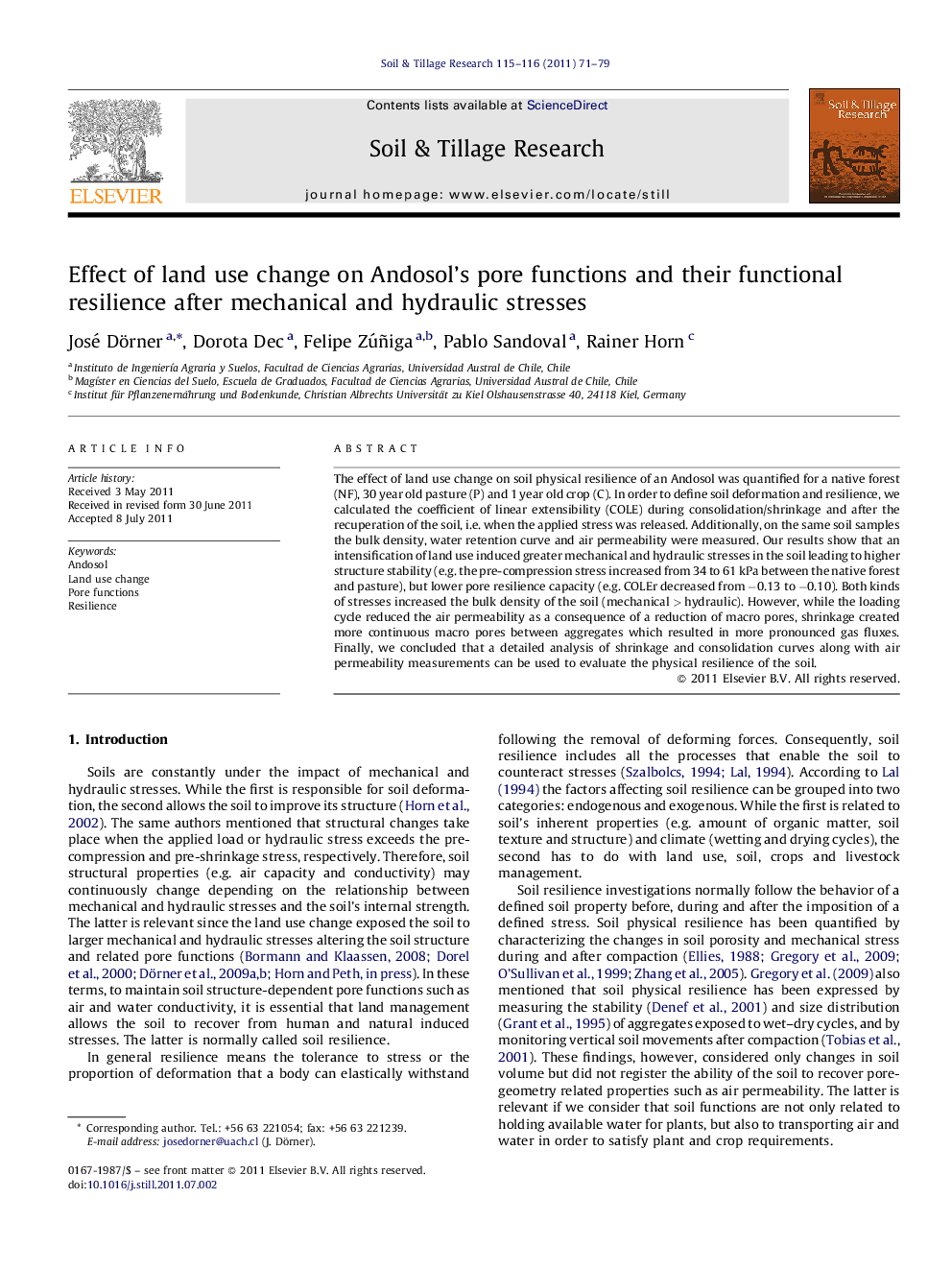| Article ID | Journal | Published Year | Pages | File Type |
|---|---|---|---|---|
| 306123 | Soil and Tillage Research | 2011 | 9 Pages |
The effect of land use change on soil physical resilience of an Andosol was quantified for a native forest (NF), 30 year old pasture (P) and 1 year old crop (C). In order to define soil deformation and resilience, we calculated the coefficient of linear extensibility (COLE) during consolidation/shrinkage and after the recuperation of the soil, i.e. when the applied stress was released. Additionally, on the same soil samples the bulk density, water retention curve and air permeability were measured. Our results show that an intensification of land use induced greater mechanical and hydraulic stresses in the soil leading to higher structure stability (e.g. the pre-compression stress increased from 34 to 61 kPa between the native forest and pasture), but lower pore resilience capacity (e.g. COLEr decreased from −0.13 to −0.10). Both kinds of stresses increased the bulk density of the soil (mechanical > hydraulic). However, while the loading cycle reduced the air permeability as a consequence of a reduction of macro pores, shrinkage created more continuous macro pores between aggregates which resulted in more pronounced gas fluxes. Finally, we concluded that a detailed analysis of shrinkage and consolidation curves along with air permeability measurements can be used to evaluate the physical resilience of the soil.
► We study structural properties of an Andosol under three land uses. ► We use deformation coefficients and air permeability measurements to determine the pore resilience capacity. ► The land use change lead to a better structure stability but lower pore resilience capacity. ► Mechanical and hydraulic stresses increased the bulk density, however, both has different effects on air permeability.
